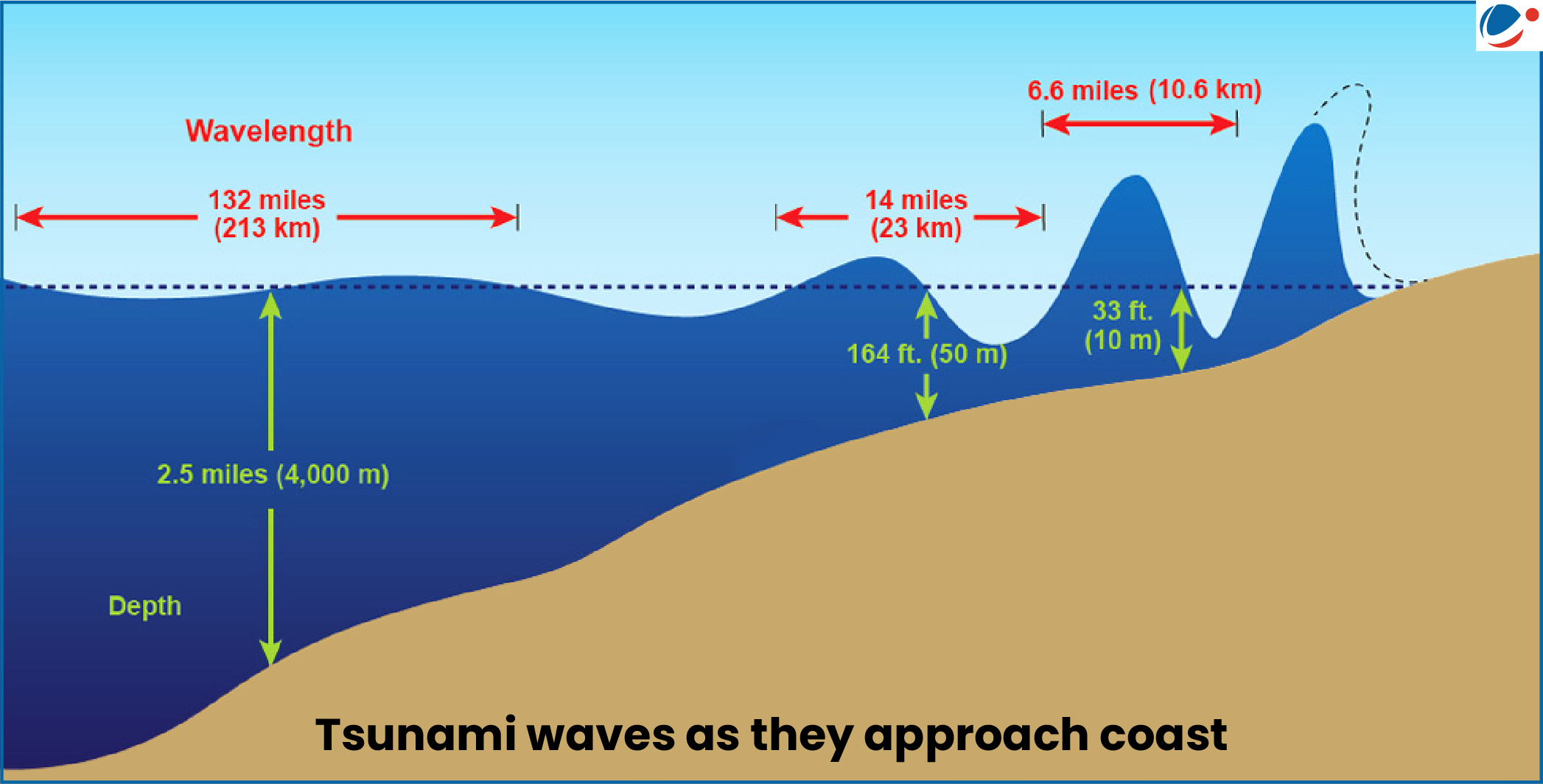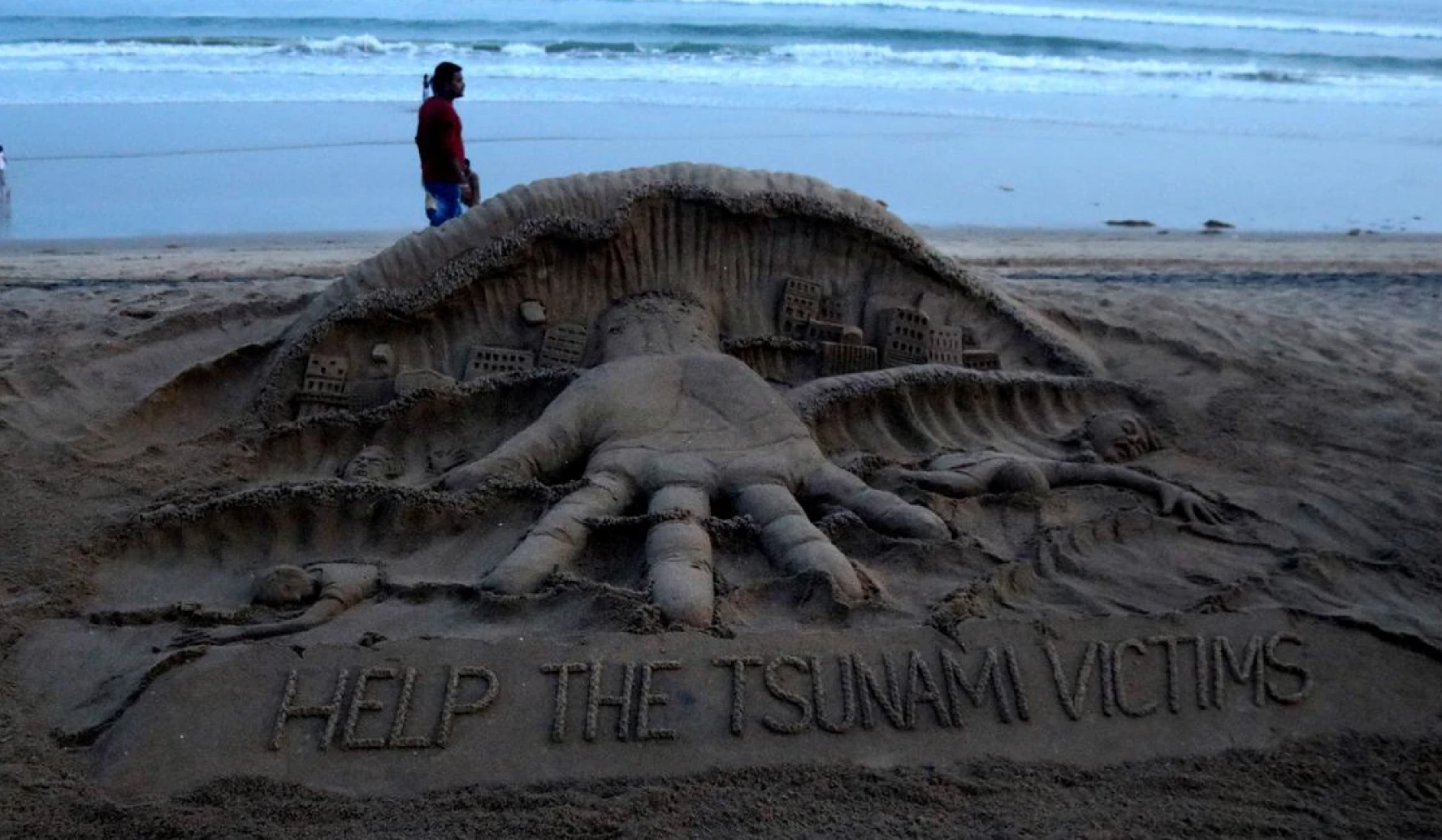A magnitude 9.1 earthquake near Sunda Trench (Indonesia) in 2004 triggered Indian Ocean tsunami that devastated almost14 countries.
- Sunda Trench is situated on Pacific "Ring of Fire" (Arc of intense seismic activity stretching from Japan through Southeast Asia and across Pacific basin).
About Tsunami
- Series of enormous waves created by an underwater disturbance caused by violent seafloor movement associated with earthquakes, landslides, lava entering sea, seamount collapse, or meteorite impact.
Features of Tsunami Waves:
- Not noticed by ships in deep oceans because their amplitude is negligible when compared with their wavelength.
- However when tsunamis approach shallow water, wave amplitude increases.
- Their speed depends on ocean depth, not distance from wave's source.

Steps taken for Tsunami preparedness
- Globally
- UNESCO-IOC Tsunami Ready Recognition Programme: Voluntary, international community-based effort to bolster risk prevention across global coastal zones.
- Tsunami United Programme: Flagship initiative of UNESCO to increase preparedness.
- Global Tsunami Early Warning and Mitigation Programme: IOC-UNESCO Programme supports Member States in assessing tsunami risk, implementing Early Warning Systems etc.
- India
- Indian Tsunami Early Warning Centre (ITEWC): Established at Indian National Centre for Ocean Information Sciences, Hyderabad is national authority to issue tsunami advisories.
- NDMA Guidelines on Management of Tsunamis in India.
- Development of Apps and devices: E.g. GEMINI device for warnings and alerts in sea.





